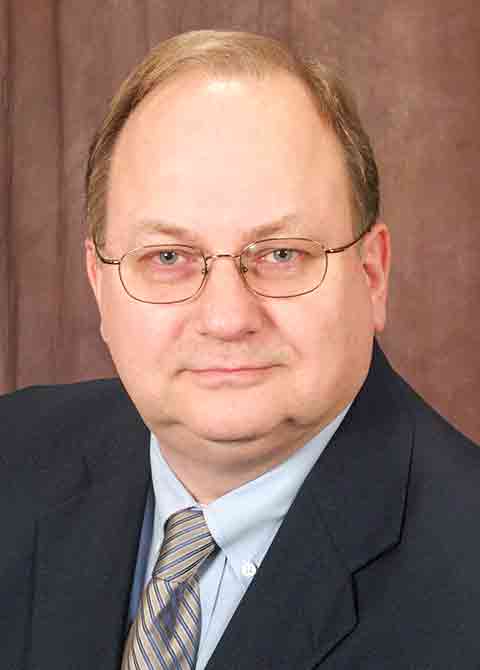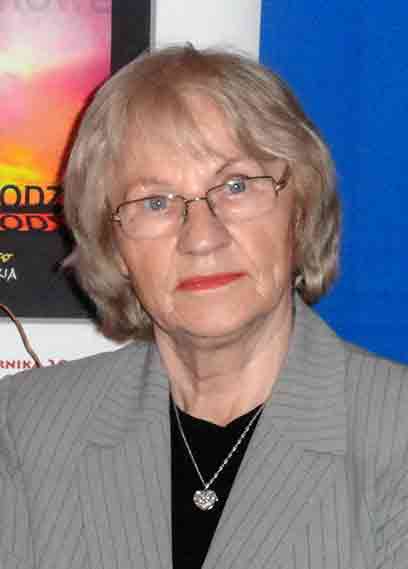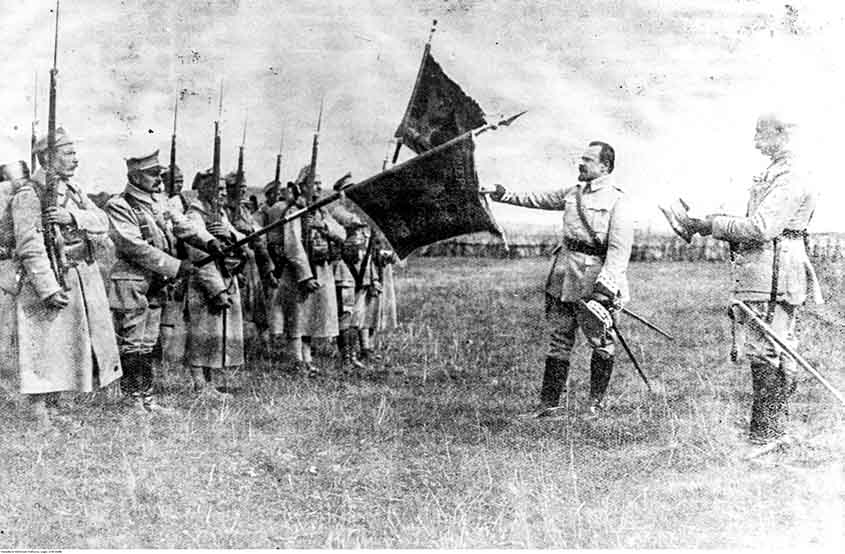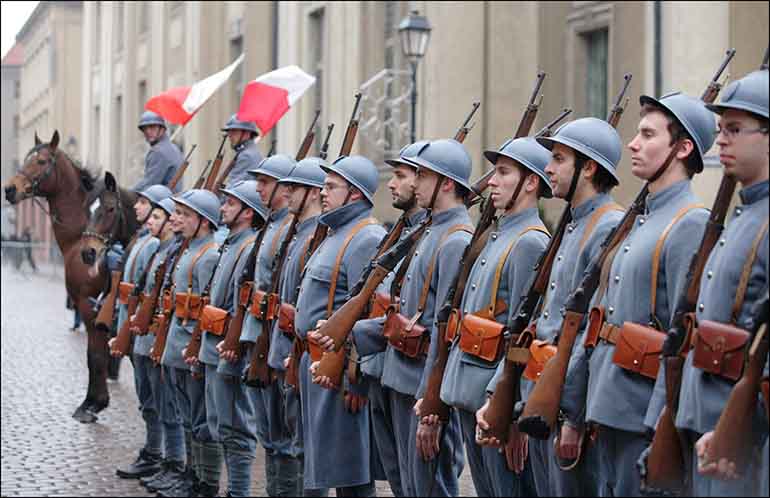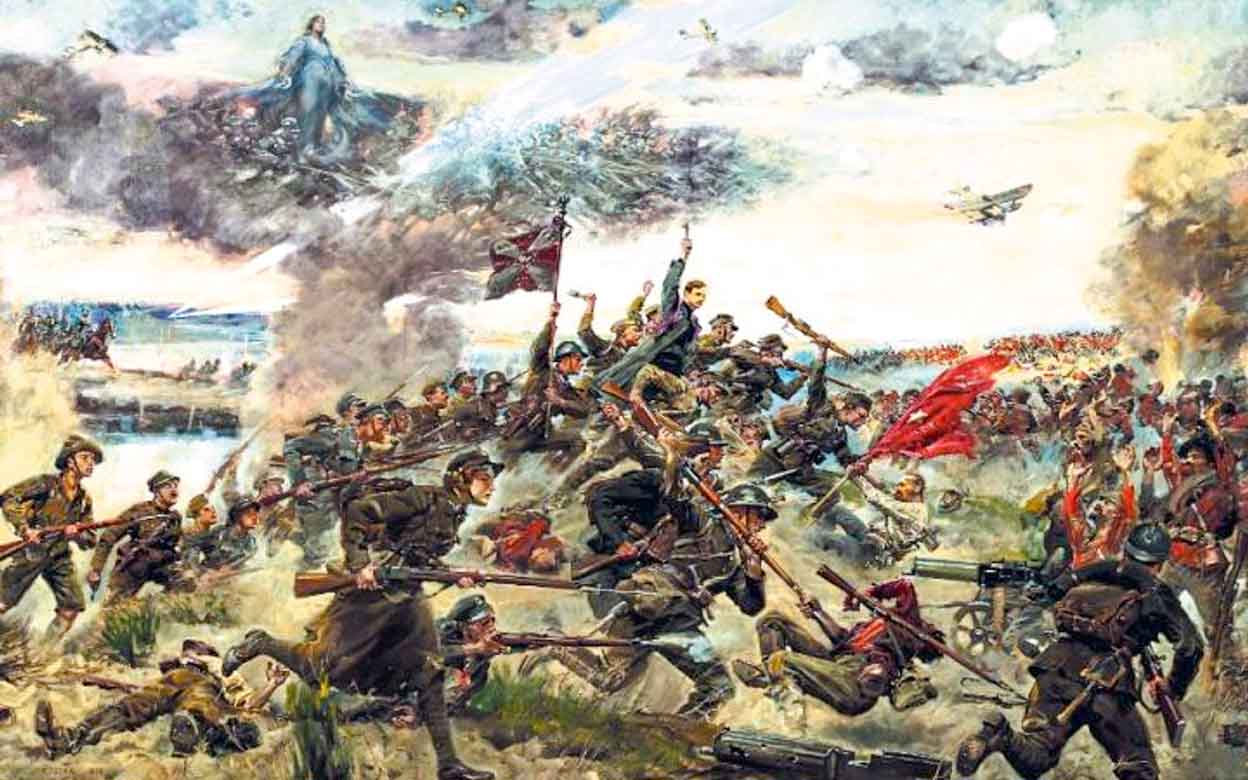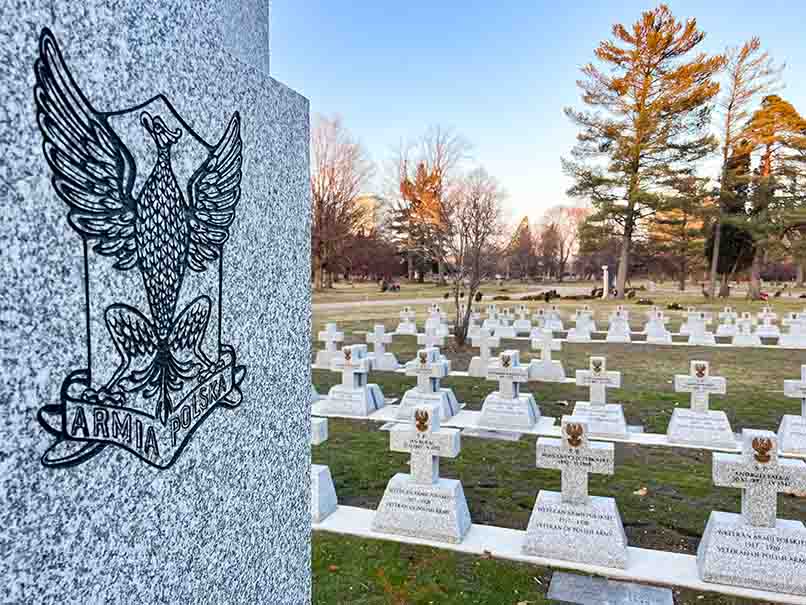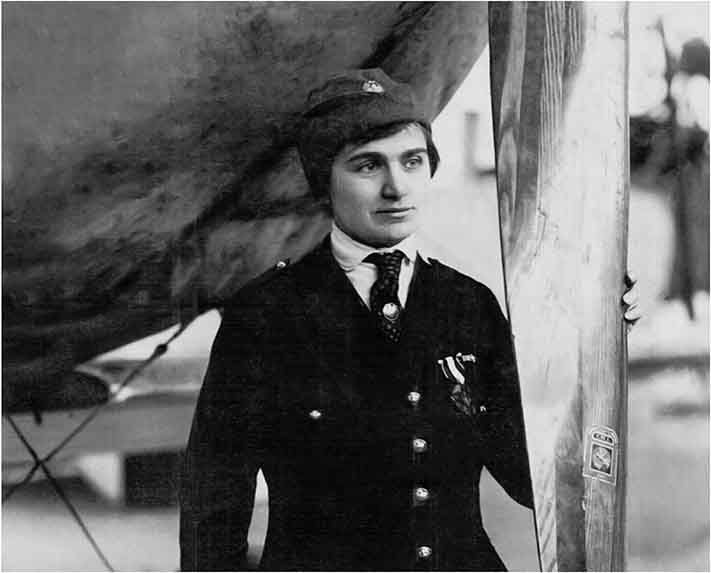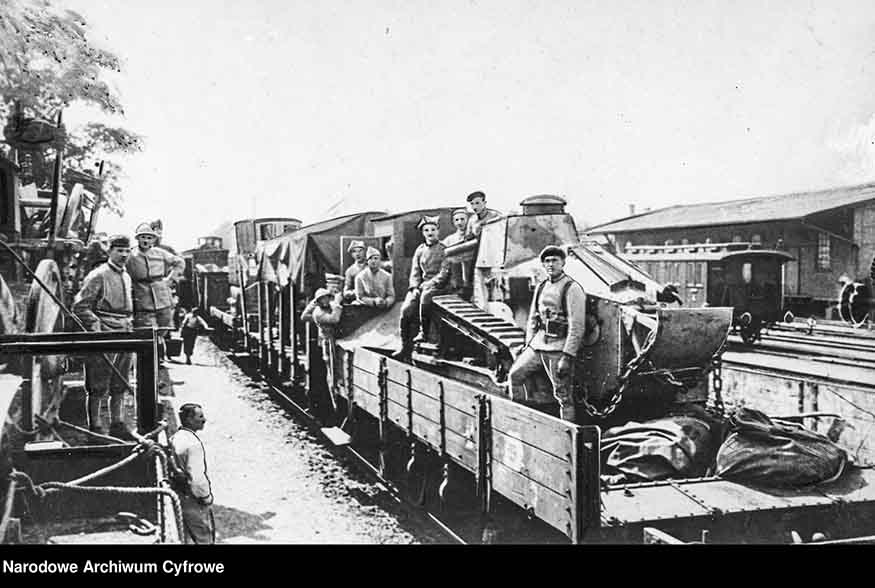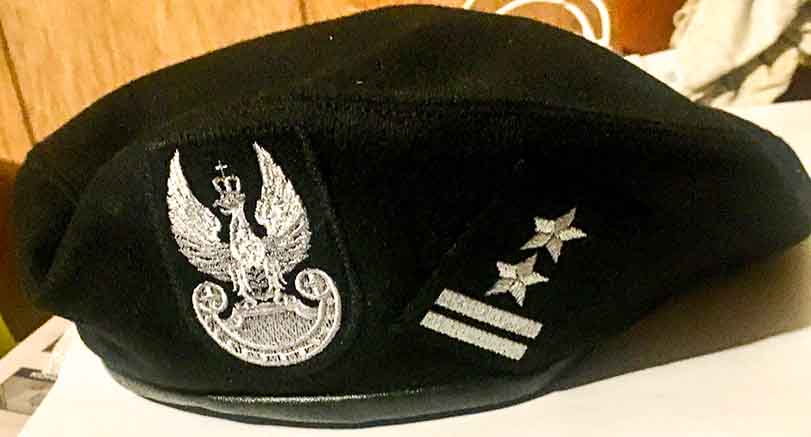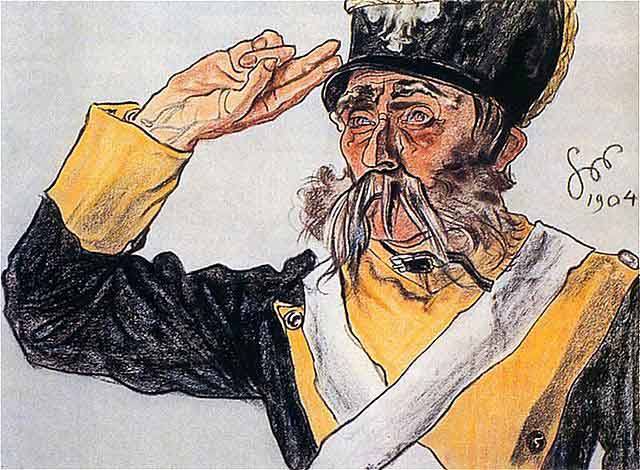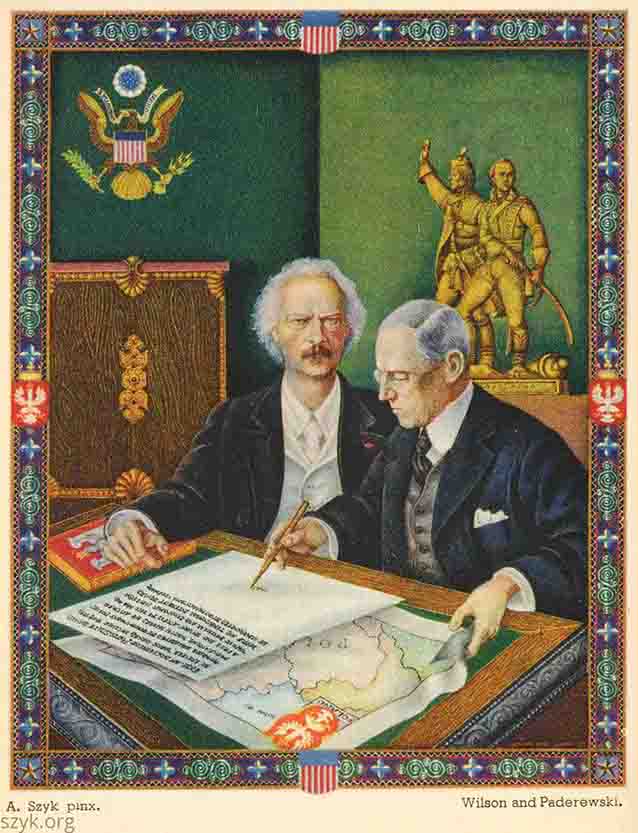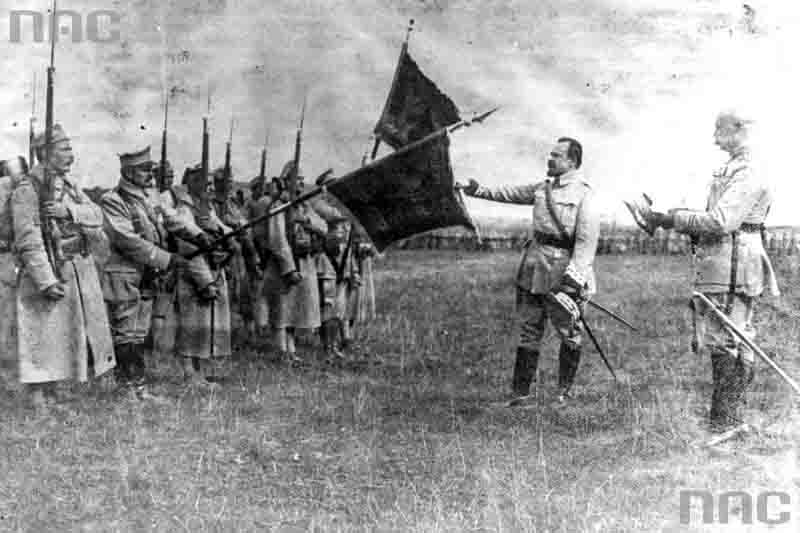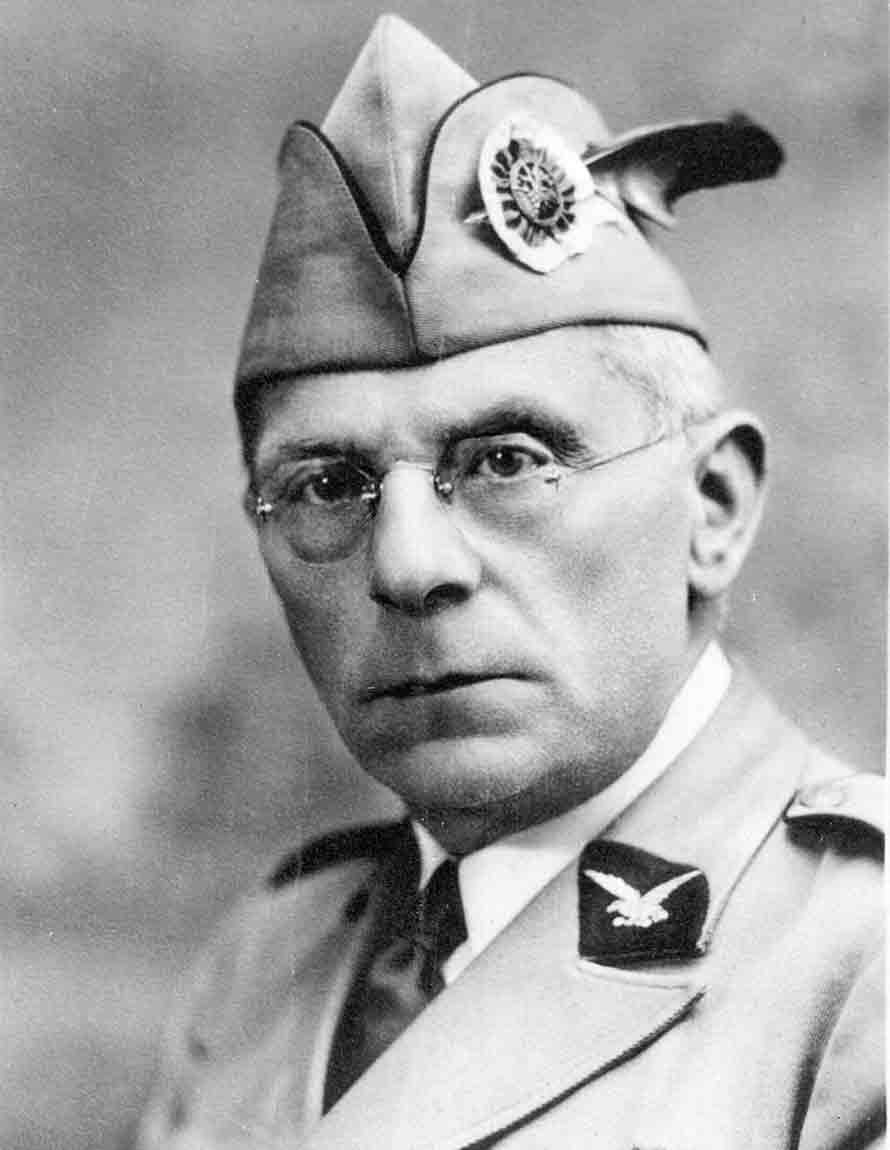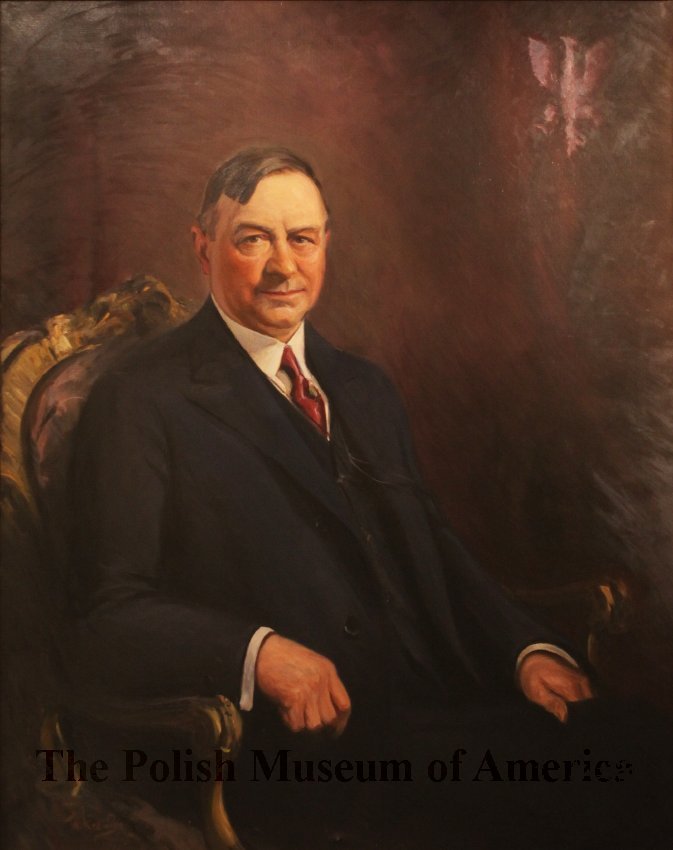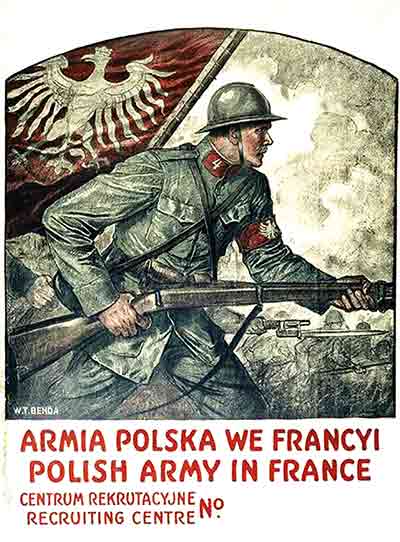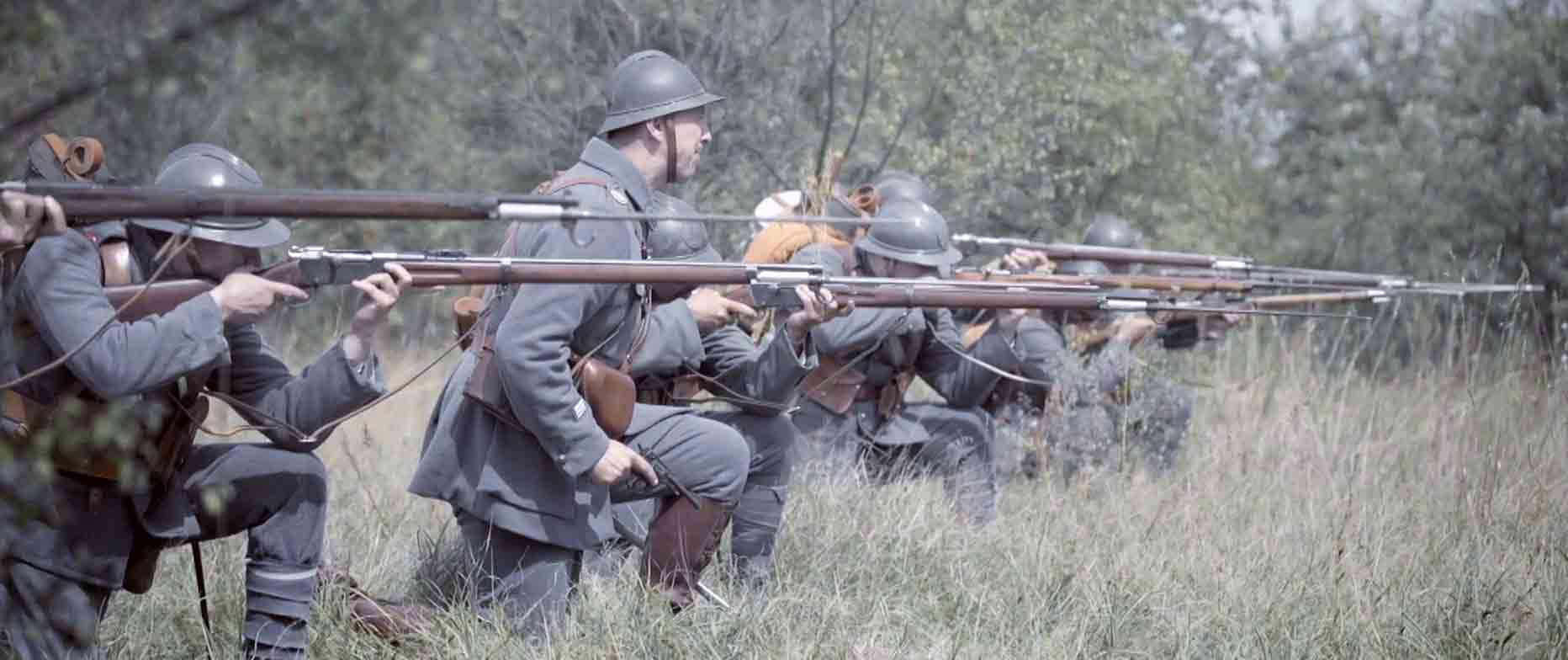The role of the »Sokół« (Falcon) Gymnastic Society in the fight for independence
From the moment of Poland having been wiped off the map of the world, each generation sacrificed the lives of their best sons in order to revive the Homeland, to restore its national existence. Unfortunately, each of the subsequent uprisings — the Kościuszko, the November, and the January Uprising — ended in collapse, wandering, and emigration, brooding over disasters, and making plans for the near future.
After the tragic end of the [1863] January uprising, in which "our people went into battle without weapons", there was a systematic material, biological and spiritual destruction of the Polish nation — the permanent destruction of its material base, culture, education and history. In such seemingly hopeless moments, a group of young Lviv patriots, grounded in European philosophical trends – Romanticism and Positivism – created the foundations for a new movement, which in the near future would become a weapon in the fight for national and cultural identity, for the right to spiritual and the physical regeneration of the nation. On February 7, 1867, the SOKÓŁ (English: Falcon, pron. soh-coow) Gymnastic Society was born in Lviv (pol. Lwów).
The idea of the Falcon grew from the depth of national feelings and Polish aspirations for independence, and above all, the love of freedom and the homeland, inseparable from the Latin-Christian culture. The Sokół was supposed to be that universal glue, combining the advantages of the mind and the will of the countrymen into a monolith during the time of captivity, able to reach independence at the right moment, and be able to preserve it after gaining it. Only in the perfect combination of thought and action can one achieve the desired goal. The eagle as a national symbol did not have the right to exist at that time. It was replaced with another symbol that was equally eloquent. The far-sighted falcon, in the Slavic tradition, was associated with freedom, dexterity, endurance and strength, as well as with the reliability of an attack. Initially, SOKÓŁ troops were concentrated around Lviv and Galicia. Later, they were everywhere where the Poles were: in Germany, Russia, Romania,
The chivalrous ethos of SOKÓŁ was born with its symbols, signs, slogans and ethical requirements. The keynote of the Falconry movement was the slogan derived from the Hellenic tradition, referring to the harmonious physical and spiritual development: "a healthy mind in a healthy body", but there was also a patriotic exclamation: "HEAD TOWARDS THE FATHERLAND, THE TALONS TO THE ENEMY". Nests — the outposts of the Sokół movement — chose famous Poles-soldiers as their patrons. Undoubtedly, the first among them was the Chief Tadeusz Kościuszko.
Among the many virtues in force amongst SOKÓŁ such as: honesty, punctuality, responsibility, perseverance, duty and courage, there was also brotherhood, which included creating a uniform military formation of the Falcon's members, regardless of their social and financial status. Under the Falcon's banner, representatives of the intelligentsia, craftsmen, aristocrats, workers, enlightened townspeople and peasants, all stood in unison. Polish scouting, i.e. harcerstwo, also hails from the Sokół movement.
Our countrymen know little about Sokół's participation in the fights for the independence of the country. More words have been written about its gymnastic and sporting activities, officially accepting the date of Sokół's registration as the beginning of the development of sports in Poland. This correct decision does not change the fact that for the activists of this movement, physical development was only one of many necessary elements to achieve the ultimate goal. This great goal was the resurrection of Poland!
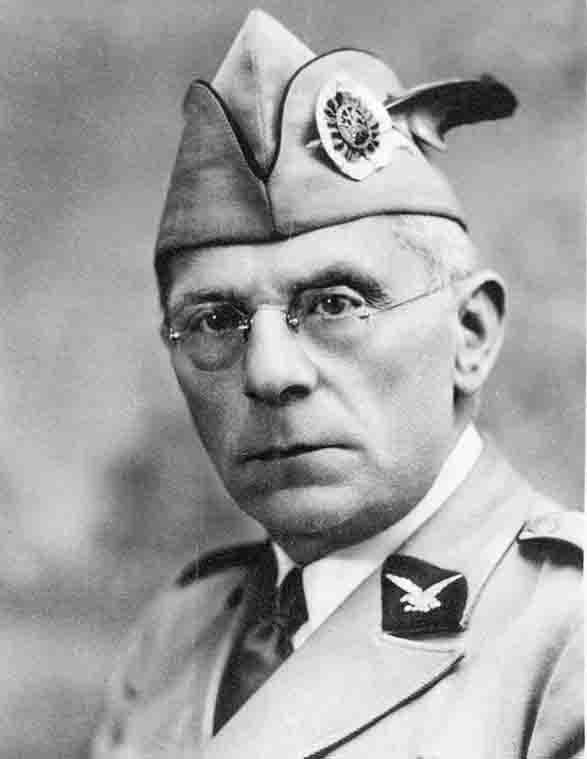
Dr Teofil Starzyński
Many thousands of noble Poles, masters of the word and brush, musicians, doctors, journalists and publishers, entrepreneurs and bankers participated in this huge, organic work. Among them were: Maria Konopnicka, Henryk Sienkiewicz, Wacław Gąsiorowski, the great leader of Sokół in the United States, Dr. Teofil Starzyński, editor of the Union's Journal Jan Smulski, co-creator of the Panorama of the Battle of Racławice, Jan Styka, and Ignacy Jan Paderewski, the most meritorious for the cause of independence. Few of us remember today — or those of the younger generations even know — that it was for the Falcon brothers, for the 500th anniversary of the Battle of Grunwald, that Maria Konopnicka wrote the words of "Rota", and that Feliks Nowowiejski composed music to them at the request of the authorities of the Falconry association. This song was taught in all the falcons' nests, in the homeland and abroad, wherever SOKÓŁ arrived in its tireless flight to include new masses of Poles under its wing.
SOKÓŁ showed its strength at the Rally in Lviv in 1913. It was then that 8,000 young boys and girls demonstrated their combat training during maneuvers led by the commander of field teams, Józef Haller himself.
The "Polish cause" is born in the USA
In the eighties and nineties of the 19th century, among Polish emigrants in the United States, the awareness of the value of joint action was emerging. The foundations for understanding the Polish raison d'état are being laid. Organizations and various societies are established, among which the following deserve special attention: the Polish Roman Catholic Union – established in 1873, the Polish National Union – 1880, the Union of Polish Falcons in America – 1891, the Union of Polish Women in America – 1895. In Milwaukee, in 1888, the first Polish newspaper on the American continent is founded. The motto of Kuryer Polski is:
Kuryer Polski represents Polish interests in the USA.
All these organizations aimed at gaining independence and freedom of Poland through material aid and through armed struggle. This idea was voiced aloud by the President of the Polish National Union, Marian Stęczyński, at the Congress in Washington in May 1910. It was written in the form of a resolution and adopted unanimously as follows:
WE POLES HAVE THE RIGHT TO BE AN INDEPENDENT NATION AND WE CONSIDER ITS SACRED DUTY TO STRIVE TO ACHIEVE THE POLITICAL INDEPENDENCE OF OUR COUNTRY
Similar sentiments were presented in July by the Grunwald Congress in Krakow. All Poles were convinced that the right time was approaching when the invaders would fight against each other and then it was necessary to take advantage of the situation and win independence. In Poland, but also among Polish diaspora all over the world, especially in the United States where it had the greatest opportunity to act freely, preparations for that moment began. Funds were raised and preparations for military action were made. SOKÓŁ, that had already conducted secret military training, played a special role in these preparations.
When the war broke out, the partitioning states forcibly conscripted Poles into their armies, and the battlefront kept sweeping through the Polish lands. This threatened with the biological and spiritual destruction of the nation. Already in the first weeks after the outbreak of the war, all Polish organizations jointly established the Polish Central Rescue Committee, the aim of which was to provide material assistance to Poles under the partitions and to prepare for an armed act. This second noble goal assumed the creation of the Polish army. It was obvious that the best real base for this was the Falconry, but there was also a need for a staff of instructors, equipment, and encampments where training could be conducted. It required patriotic commitment, material sacrifice and skillful diplomatic work, as the law of the United States did not allow the creation of a foreign army on its territory. In the Polish territories, the Falcons mostly followed their commander, Józef Haller, creating the 2nd Legion Brigade, which gloriously marched down its combat trail in the East.
Polish leaders did not always agree on the shape and method of creating an independent homeland, and the propaganda of the partitioning powers caused perfect confusion and quarrels among Poles. Polish Falconry in America soberly assessed that one should be prepared for an armed act. The situation became clearer when on January 22, 1917, the President of the United States, after meetings with the Polish community lobby, said to the Senate:
I am absolutely sure that all statesmen have admitted that there should be a united, independent and autonomous Poland
Building the Blue Army.
The political direction was simple — Poles should cooperate with the countries of the Triple Entente. After many visits with government officials, special hopes were placed on the Canadian government, which agreed to admit a group of Falcons to the officer school in Toronto.
On January 1, 1917, 23 candidate officers secretly arrived in Toronto. On May 21 of the same year, 17 of them received officer ranks. The top five became instructors at the Cadet School in Cambridge Springs. It was a breakthrough in the creation of the Polish army. On March 19, 1917, in Cambridge Springs, Pennsylvania, in place of the two-month paramilitary courses that had been held since 1914, the Cadet School was established, which prepared NCOs and officers for the Polish army. The training was to a high standard. The best specialists, educated at the officer school in Toronto, were teaching.
On April 1-4, 1917, the Extraordinary Congress of the Falcons Association was held in Pittsburgh, at which IJ Paderewski spoke. At that time, the United States was already engaged in the war against Germany. The Honorary Falcon — Master Paderewski — in his speech took up the idea of organizing a Polish army of one hundred thousand and naming it the "Kościuszko Army".
Despite fierce criticism of this "unfortunate and ridiculous idea by an artist who did not fully understand the principles of statehood," the dreams of the Polish army became reality. On June 4, 1917, the President of France, Raymond Poincaré, issued a decree establishing an autonomous Polish Army in France. Initially, its ranks were joined by prisoners of war from the Austrian army and volunteers from the French Polonia. General Louis Archinard was appointed its commander-in-chief. France agreed to uniform and equip Polish soldiers. They were assigned a bright blue uniform, which was why they were nicknamed the "Blue Army."
Building the foundations of Polish statehood
On August 15, in Lausanne, Roman Dmowski founded the Polish National Committee (Komitet Narodowy Polski, KNP), whose aim was to rebuild the Polish state with the help of the Triple Entente states. The KNP was recognized by the governments of France, Great Britain, Italy, and the United States as the representative government of the newly-reviving Polish state and representing Poland's interests. KNP pursued foreign policy and organized the Polish Army in France. A special Military Mission was also created at the Committee, which was to agree with the Entente governments on the legal conditions on which the Blue Army was to operate. The American Polish diaspora worked closely with the Committee. Independence was lobbied for with the US government, funds were raised, and military training was stepped up.
Soon a recruitment campaign for the Polish army started. Everywhere where there were larger Polish communities, especially in the United States and Canada, there were passionate appeals:
TO THE RANKS!
TO ARMS!
TO FIGHT!
GRAB A WEAPON!
FIGHT FOR POLISH FREEDOM!
The Association of Falcons in America called an Extraordinary Rally, attended by a representative of the Military Mission from France, a well-known writer, Lieutenant Wacław Gąsiorowski. After his passionate patriotic speeches, military commissions were set up to organize the recruitment. These committees developed detailed guidelines for volunteers joining the military. They appointed 12 District Recruitment Centers. Center No. 1 was in Milwaukee, Wisconsin, Center No. 2 in Chicago, and another in New York, Boston, and other larger Polish diaspora centers. Organizational work, thanks to the great commitment of the Mission and volunteers, went very smoothly. The United States agreed to the recruitment, and Canada granted a rally camp site in the border town of Niagara-on-the-Lake. Volunteers started pouring in quickly.
On November 4, after a solemn mass, the Camp was consecrated and a banner with the White Eagle was placed over it. Then there was a parade in which the columns of the future Polish Army marched saluting the banner. The journalist for the "Union's Journal" (Dziennik Związkowy) describes those moments as follows:
The mood was solemn and serious, as these columns marched in front of us, everyone was aware that this was a historic moment in the life of the Polish nation.
On November 21, the camp was visited by Master Paderewski who delivered a short speech, which he concluded with the following words:
I am happy to see you in these ranks, because I see it as an announcement of the Polish victory. Your homeland demands great sacrifices from you, but a great reward awaits you, because the freedom and independence of the United Poland depends on your courage. Go with faith in victory, and may the Highest God guide you and bless you.
Volunteers from America
The recruitment process in the first days was very enthusiastic, not to say violent. Even the descendants of Poles who had come to America were enlisted. Some have never known the country of their fathers before.
After only two weeks, the Niagara-on-the-Lake training camp was overcrowded to the point that the commission temporarily suspended volunteers. In November, nearly 3,000 were stationed in a camp for 500–600 soldiers.
Winter was approaching and the climatic conditions were rather not conducive to living in tents. Organized legions of Polish women started sewing workshops to provide volunteers with warm clothes, sweaters, scarves, socks and gloves. The Master's wife, Helena Paderewska, was the patron of this undertaking. After prolong efforts of the Commission, the American government made Fort Niagara available for Polish needs on the other side of the border. This temporarily resolved the accommodation problems and the recruitment could continue.
On December 28, 1917, the first transports of volunteers to the Polish Army from the United States reached France. Thousands of volunteers waited for the next ones in the training camps, and the recruitment campaign, thanks to the involvement of artists and the Polish press, spread wider and wider. The graphic artist Władysław Benda was particularly famous in the propaganda campaign. Everyone knew his posters, and today he is identified with them.
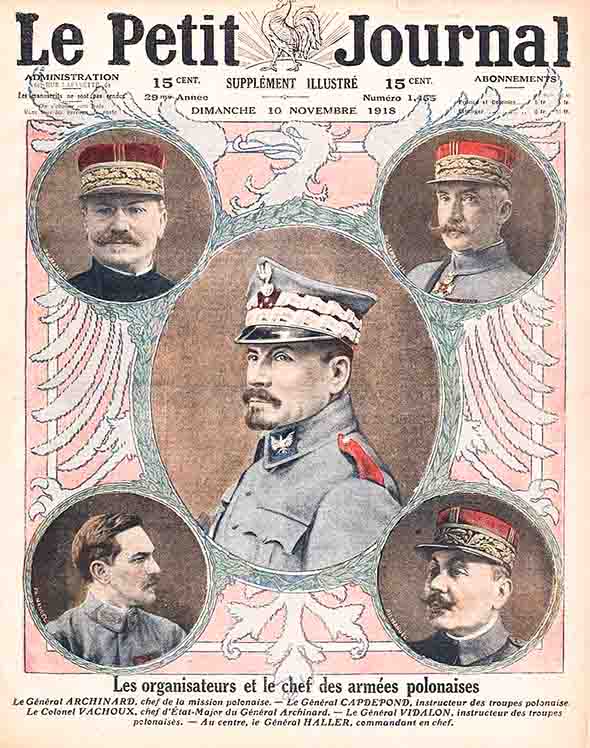
The cover of Le Petit Journal from November 10, 1918. The head of gen. Haller in the center.
The recruitment was finally completed in February 1919. On March 11, the last Polish volunteers left the Niagara-on-the-Lake camp. From the detailed report of the camp commander, Colonel Le Pan, we learn that 20,720 soldiers left for France. Due to poor health, 1,004 were released, 129 were released to support their families, 91 were sent off for other reasons, and 41 died in the camp of the Spanish flu. There were also 212 deserters and five "undesirables."
Recruitment was underway in the Polish communities, and in Paris, the National Committee made sure that the army being formed was truly Polish, with the Polish eagle, a Polish staff, and a Polish commander. On its anniversary, the Blue Army received banners from the French cities of Paris, Nancy, Belfort, and Verdun, and the soldiers uttered the words of the oath:
I swear before the only God Almighty in the Trinity, to be faithful to my homeland, one and indivisible; I swear that I am ready to lay down my life for the holy cause of its unification and liberation, to defend my banner to the last drop of blood, to keep discipline and obedience to my military authority, and to protect the honor of the Polish soldier with all my conduct. So help me God.
Roman Dmowski and French military commanders took part in the ceremony. After the oath, the soldiers went into tranches, and then took part in the fights in which the first soldiers and officers were killed. The initial list includes 108 names. It is not known how many died before such lists were compiled. Joy, enthusiasm and hope faced death for the first time. At the same time, there were disputes in the circles of political leaders about the shape and forms of acting for the Independent.
On July 13, 1918, after the refusal to swear allegiance to Austria, after a ten-day odyssey by Karelia and Murmansk, the legendary leader of the Polish falconry in Poland, the commander of the 2nd Legion Brigade, General Józef Haller, reached Paris. He immediately joined the work of the Polish National Committee, which first entrusted him with the chairmanship of the Military Mission, and on October 4, 1918, after diplomatic efforts in the French command and government, it formally entrusted him with the command of the Polish Army being formed.
The combat strength of this army at that time was a division, about 10,000 soldiers. When the Blue Army left for Poland, it numbered about 70,000 soldiers, including about 35,000 ex prisoners-of-war from the Austro-Hungarian army, and about 22,000 from the Polish community in America (including 1,000 from Milwaukee and 3,000 from Chicago).
On October 9, General Józef Haller, taking command, swore under the banner the allegiance to Poland. The division did not manage to enter the fighting on the Western Front, because the war for the world ended on November 11. It continued for Poland. It was necessary to establish national borders by force, both in the East and in the West. The Polish Army was needed, desired and expected by Poland. Meanwhile, France was reorganizing its troops and eagerly getting rid of "allies" in its territory. It helped to send the Polish army to Poland. However, the transport and the route through Germany caused difficulties.
Return to Poland
Finally, on April 4, 1919, an agreement between the French and German governments was signed at Spa and transit lines were established. General Haller gave the appropriate orders and the evacuation of the Blue Army to Poland began. The April 15, 1919, order to return was:
The longed-for moment has come for the Polish Army to march from Italian, French and American lands to Poland. Just like a hundred years ago, today we are returning to Poland, happier than the others ... The Polish Divisions, created in foreign lands by the efforts of the entire Polish nation, and especially thanks to the hardship and bravery of its emigration in both Americas, North and South, are going to Poland; thanks to the persistent work of Polish statesmen, such as Ignacy Paderewski and Roman Dmowski, thanks to the armed deeds of the Head of the Republic of Poland, Józef Piłsudski.
Equipment, under minor protection, traveled in sealed carriages, while soldiers, provided with provisions for 8 days, went in separate carriages. The first transport left on April 16. The last of the 383 trains arrived in Poland in mid-June. Of course, the journey was not without harassment and difficulties on German territory, but the Polish population welcomed the blue soldiers with flowers, Easter breakfast and joy. After all, it was the first real Polish army since the November Uprising.
General Haller arrived in Warsaw on April 21, 1919. He was greeted like a national hero, and the magistrate awarded him the title of an honorary citizen of the city.
The Blue Army was, at that time, very well equipped and trained. It had 120 tanks, 98 aircraft, engineering troops, instructors, cavalry, artillery, communications troops, 7 field hospitals, and a very high morale among soldiers. Already in May, it was directed to the eastern front, the site of Polish-Ukrainian fights, the greatest threat from Soviet Russia. General Haller fought for the same Polish cities for which he fought as the commander of the 2nd Legionary Brigade. Through Eastern Galicia and Volhynia, he reached the Zbrucz river line with his 'Blue'. He faced the cruel cavalry of Semyon Budyonny.
The Blue Army versus the politics
Despite strategic successes, or perhaps because of them, the general did not find recognition from the Chief of State. He remained in opposition to the ruling camp until the end. In June 1919, he was dismissed as the commander of the Blue Army and sent to the Polish-German border in order to take command of the South-Western Front. Under a different, ever-changing command, the Haller-soldiers felt abandoned and disappointed.
A lot of grief can be discerned from the front reports of Lt. Col. Tadeusz Kurcjusz, a Polish volunteer from America, chief of staff of the 13th division. The reports cover the period from January to June 1920. The division was gradually relegated to a secondary role. Concluding his memoirs, Lt. Col. Kurcjusz bitterly writes:
At that time, the new division commander, Colonel Paulik, arrived in Kordylewka. With his arrival, there were no changes to the ways of command. He still left the staff a free hand to issue orders on his behalf. (...) The concern for conducting activities still falls entirely on me and sometimes it was extremely difficult for me to make decisions on my own, not believing or knowing my commander and his thoughts on the maneuver. (...) The strategic goal of the expedition has disappeared, and the political goal has remained.
On September 1, 1920, the Blue Army was completely disbanded. Particular formations became part of other domestic military units. Volunteers from the United States were demobilized, which aggravated the American Polonia.
The number of demobilized Haller-men was estimated in February 1920 at 10,000 to 12,000. The situation of the demobilized soldiers of the Blue Army was very bad. The matter was discussed at the highest levels of the US government. Julius Kahn, Congressman from California, and Congressman Kleczka, from Milwaukee, Wisconsin, took interest in it.
The issue of the return of demobilized volunteers was raised in the House of Representatives as early as the beginning of 1920. The Chamber authorized the Secretary of War, Baker, to transport demobilized Haller-men — equally American citizens — on American transports. These were the supply ships for American soldiers stationed in the occupied Rhineland. The soldiers, demobilized at different times, waited for transport in the overcrowded camps in Skierniewice and Grupa near Grudziądz.
The first ship, for which the demobilized Haller soldiers were waiting, entered the port of Gdańsk on March 19, 1920. It was the USS Antigone freighter. 1,168 veterans were boarded on March 28. Before departing, the American Red Cross health services had performed a health check and carefully deloused the veterans. The next USS Pocahontas transport took 1,705 veterans. Both transports reached New York at the end of April 1920. The seventh transport arrived on August 12 that year. The last one, on February 16, 1921.
Observers from the American Red Cross later reported that Poland was surrendering its defenders in a very poor physical and mental condition, emaciated, hungry, infested with lice, without money, without underwear. By the time the first ship reached Antwerp, the first cases of typhus were recorded among the soldiers.
The arrival of the shipment of Haller-soldiers to the US made the US authorities quite confused, as the veterans' ID cards turned out to be worthless, as they contained neither photographs, nor fingerprints. There was great fear that Bolshevik agents might be among the returnees. British intelligence informed its allies that some Haller soldiers, before leaving Gdańsk, had received offers to sell their documents for $1,000, a huge sum for those times. However, no spy could be identified.
In total, 12,546 Hallerians returned to the States. Returnees had to be provided with accommodations before going home. The military camp at Camp Dix, New Jersey, was made to accommodate the returnees. The Polish envoys, after diplomatic talks with the representative of the Polish community, Jan Smulski, agreed to finance the costs of staying in the camp, a train ticket to the place of residence, and to pay each private $10, and each officer $20, as a one-time allowance. The Polish National Department (the Polish community fund) paid each private $15 and the officer $30 in benefits. It was supposed to be enough for the veterans for their first expenses.
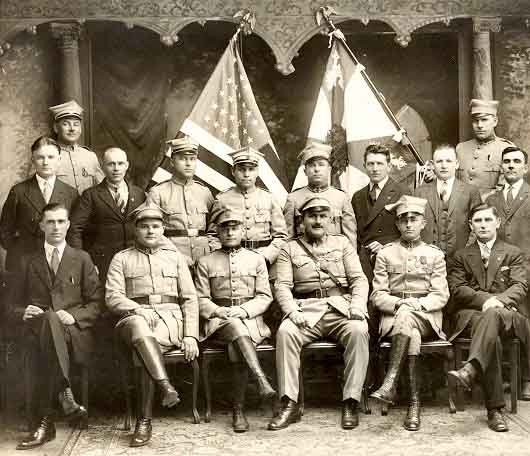
SWAP Post #57 veterans in Elizabeth, New Jersey
Roman Dmowski, in a letter to Jan Smulski dated October 12, 1920 and published in "Dziennik Związkowy", thanked for the contribution of the Polish diaspora to the work of regaining Independence. Apart from expressing their appreciation and honoring them with the America's Volunteer Cross, the veterans were left to their own devices. Many of them were disabled or lost their health. They began to organize help for their friends in need. In May 1921, they established SWAP (Stowarzyszenie Weteranów Armii Polskiej) — the Association of Veterans of the Polish Army in America. Its first president was Colonel Dr. Teofil Starzyński, president of the Polish Falcons in America. The tireless organizer of the recruitment campaign, faithful to the Falcon's oath, he went with his friends to the front as a doctor. The list of people like him goes on and on. The SWAP fund was supported in 1926 by the greatest of Falcons, IJ Paderewski, in the amount of $10,000.
In October 1919, General Haller was entrusted with the command of the Pomeranian Front, created in order to peacefully and orderly take over the Pomerania, the land granted to Poland under the provisions of the Versailles Treaty. According to the plan, the takeover of the Pomeranian lands began on January 18, 1920, and on February 10, General Haller, together with the Minister of Internal Affairs, Stanisław Wojciechowski, and the new administration of the Pomeranian Voivodeship, arrived in Puck, where he made a symbolic wedding between Poland and the Baltic Sea. It was a beautiful, if only a symbolic, act.
In the summer of 1920, a new threat emerged from the east. General Haller received the function of the Inspector General of the Volunteer Army, to organizing which he made a great contribution. From a strategic point of view, it is difficult to understand why a well-equipped army was disbanded, only to be replaced shortly thereafter by an army of volunteers. General Haller was slowly removed from military affairs until, after the May coup, he completely withdrew from public life.
The Blue Army and the political game around it, are completely ignored in Polish historiography. The fact is that Haller's Army was the best trained and best armed tactical unit of the Polish forces and represented very high morale and combat capabilities.
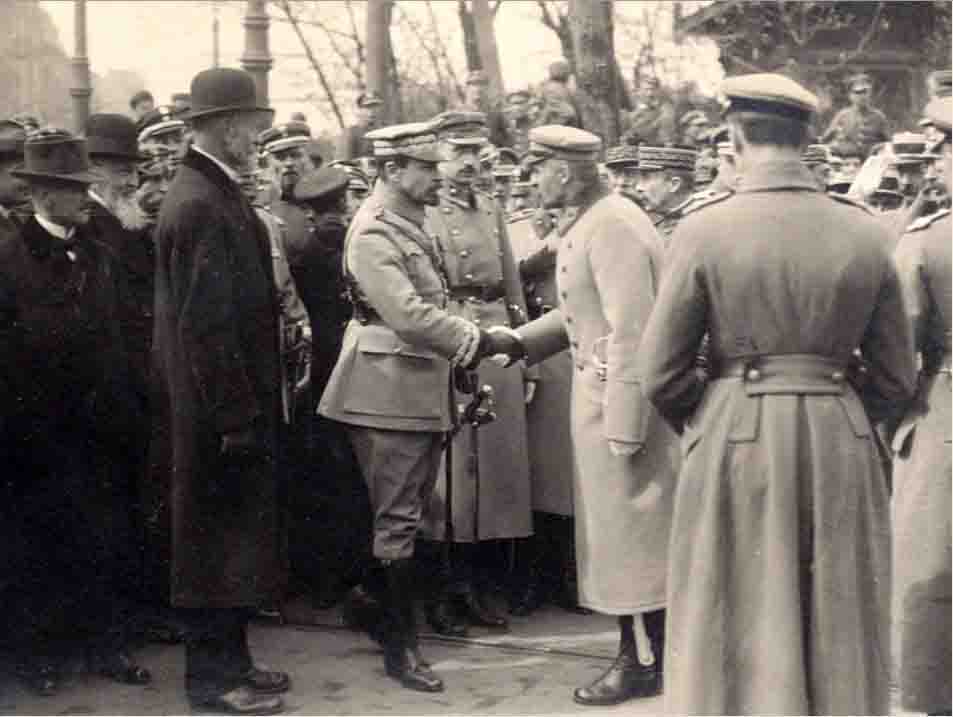
Generals J. Piłsudski i J. Haller
As a whole, under the command of General Haller, it could pose a serious threat to the emerging legend of Marshal Piłsudski. In 1919, the latter began to systematically replace the command staff of the "Blue" with his legionaries. The demobilization of volunteers from the United States, the best part of this army, in the face of the threat of Soviet troops, was unbelievable. It was not surprising, however, that when in June 1920, in the face of the Bolshevik threat, a volunteer army began to be organized, demobilized Haller soldiers were massively flowing into it.
Does Poland love the Polish diaspora?
History repeats itself. In March 1941, a Polish recruiting mission arrived in the still-hospitable Canada, neighboring the again-neutral United States. The recruitment mission of the Polish Armed Forces in the USA and Canada took place in 1941-42 and was commissioned by General Władysław Sikorski, after his visit to America, where he was enthusiastically welcomed by the Polish community and, on this basis, assumed that the recruitment would result in an influx of volunteers to the Polish Armed Forces in Great Britain. The mission turned out to be a failure. The Polish community abroad drew conclusions from the experience of the Blue Army.
Despite all bitterness, pain, and the sense of moral harm, Polonia has always supported and supports a free and sovereign Poland. An example of this may be the activities of the Polish community during the martial law, efforts to enter Poland into NATO, and activities aimed at the deployment of American troops in Central and Eastern Europe. Nine million signatures on a petition supporting a request to join NATO were of importance. The marginalization of the participation of the Polish diaspora in political and social life is not good for Poland.
In Milwaukee we met the "Great Two" for whom General Haller was a legend. History professor Kamil Dziewanowski told us about how, as a child, he watched the blue soldiers, waving a white-and-red flag at them as they entered Żytomierz. Major Leonard Jędrzejczak, a soldier from Monte Cassino, recalled his father — an instructor at the Niagara-on-the-Lake camp — and his meeting with General Haller in London, when in 1948, he and a group of scouts went to say goodbye to him before his departure for America. For everyone, the Haller-men were:
Birds of freedom and Polish vanguard.
History did not know the faithful,
our nation did not see them.
We have analyzed many historical studies and articles that mention the Blue Army. Most of them remain silent about the last stage of the fate of American volunteers. They don't not fully objectively evaluate their role and the role of Polish emigrants (Polonia) in the creation of the Independent.
Although there are no witnesses to this history anymore, substantial American archives remain, however, which allow to extract the truth about the great patriotism of over 20,000 soldiers and the entire army of involved civilians, Polish community activists who, together with the volunteers, devoted themselves to creating a great and strong, free and independent Poland, and for whom we should also ensure a worthy place in our historical memory.
Just as the First Cadre set off from Krakow's Oleanders, the Blue Army also set off from Niagara-on-the-Lake — they too must be respected and their proper place in the history of Poland must be secured.
Photos courtesy of the Association of Polish Veterans in America.
Translation from Polish by Andrew Woźniewicz.



